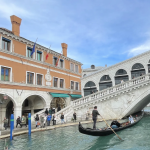On critical awareness
Good afternoon. I hope your Monday is as soft as mine. This weekend, I am visiting family in the Veneto region of Italy to reconnect with them after a long period of studies, to rest up and restore. Travelling helps me nurture a different perspective on life. So, as I prepare for my return, I reflect on the need for critical awareness (so very crucial for effective digital well-being).
As a liberation practitioner, I hold this concept close to my heart and to the core of how I work and show up in spaces. As a species, we have developed the gift of awareness with all its benefits (arts, culture, innovation) and challenges (tribalism, fear of mortality, addiction to conflict). And as we slowly shift from autumn to winter of 2022, more and more of us finally wake up to the reality of the climate crisis – a matter of our survival is now at stake.
Of course, visiting Venice and noticing the rising levels of water around Rialto bridge can cause us anxiety, but we can also start urging our leaders to speed up the critical changes, as well as rethink our own habits. In my case, for example, it is to limit air travel to the bare minimum and shift to mainly local micro-adventures instead. It is looking at a back door sign in a bookstore in Venice and wondering how many other locations worldwide already feel the impact of rising waters and what we can all collectively do about it.
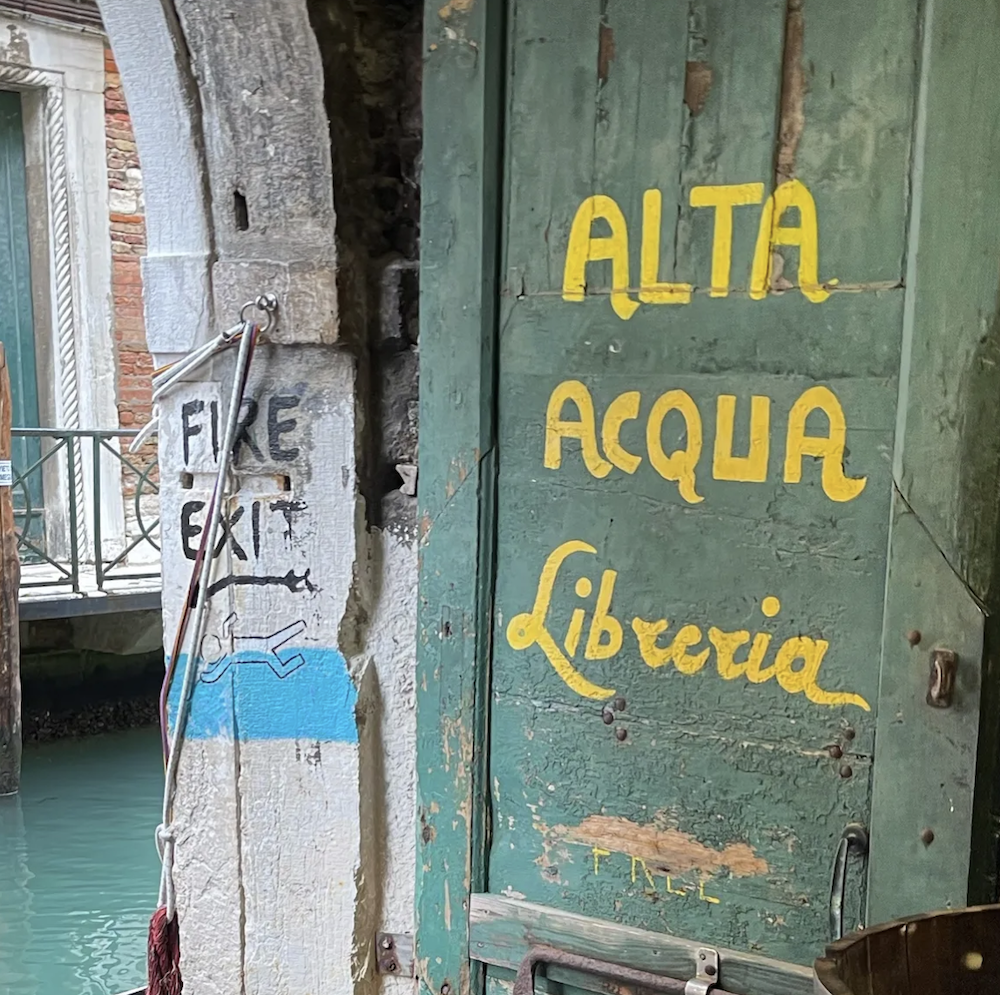
And so one of the ways liberation psychologies help raise critical awareness amongst citizens is through arts and culture. Thus, the opportunity to visit the Venice Biennale inspired me to think about this even more this weekend. The theme of the festival this year, “The Milk of Dreams”, represents the ability to imagine and transform. I think there is something incredibly powerful in the idea of dreaming: dreaming is hope. It is the ability to move forward and imagine solutions that may save our planet.
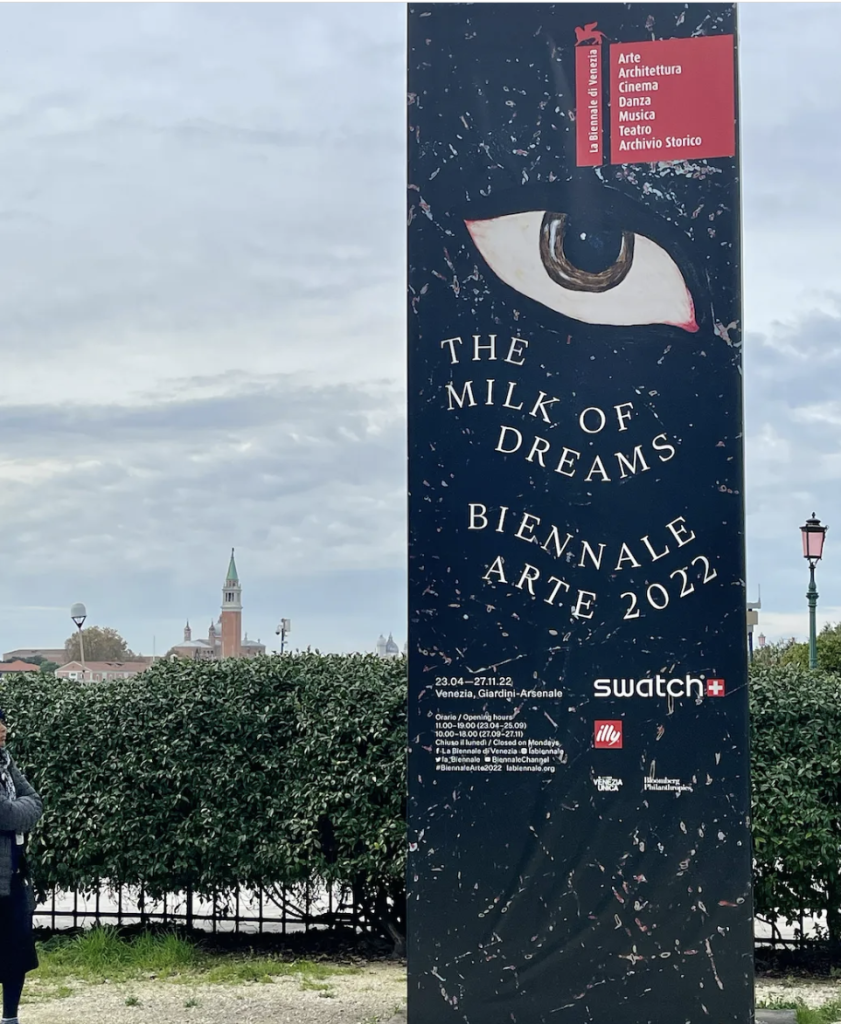
I picked up additional themes: femininity, Mother Nature and digital transformation – all ever so relevant to the work I do at the moment. The Festival organisers have their own ambitious sustainability focus, too – it is nice to see them model the change too. So let me share my favourite discoveries from the festival.

The Venetian pavillio’s “Best Wishes” by Ottorino De Lucchi was the most stunning and visceral for me. The small artwork was actually displaced in a larger space filled with dark, rich soil and wooden rakes left almost hidden in the room’s corner and with the words “TIERRA MADRE” next to it.
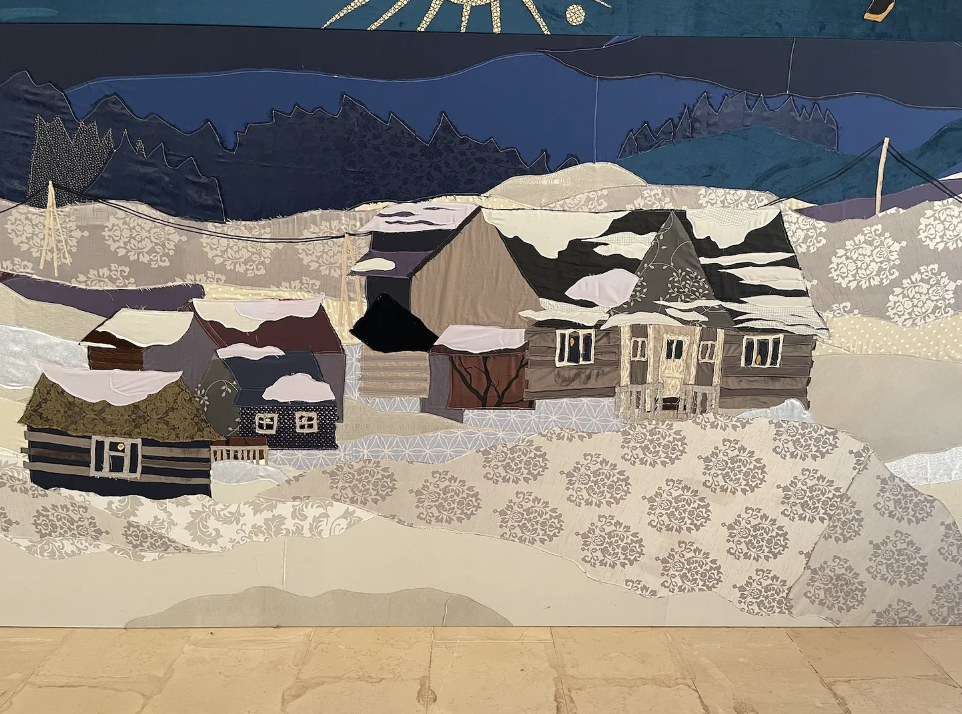
The Polish pavilion hosted Małgorzata Mirga-Tas, displaying her beautiful “Re-Enchanting the World” tapestry series – a tribute to her uncle and his Traveller ancestry. I loved the gentle reminder of cultures so closely connected with Nature, and I loved the detail, thus the above winter detail from it.
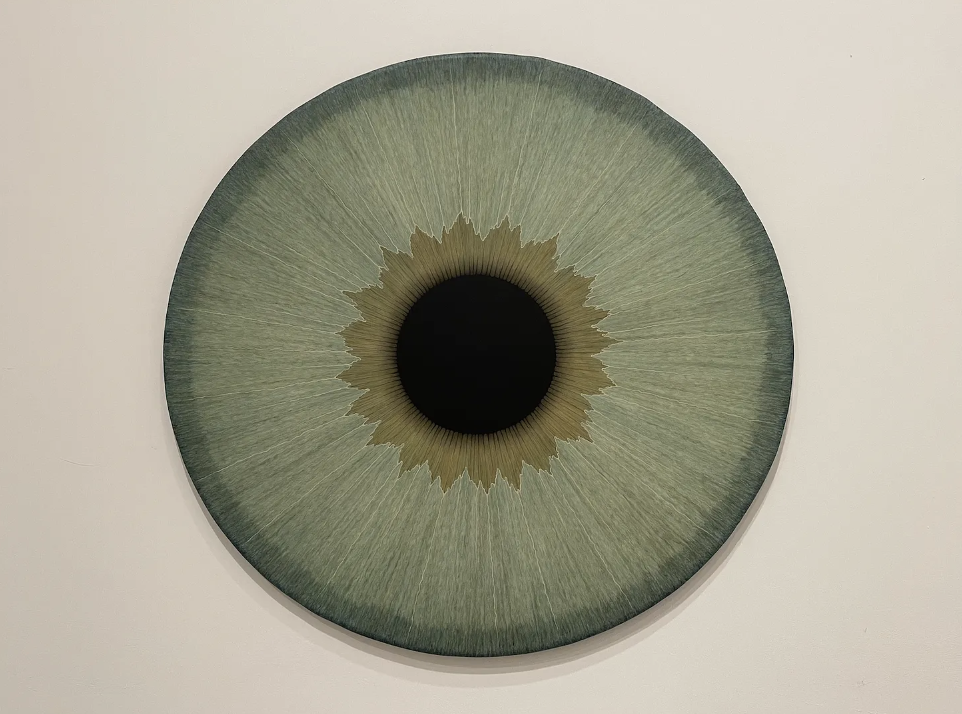
Ulla Wiggen’s works on “Cybernetic Serendipity” are fantastic, but her retina paintings indeed took my breath away. It took her months to paint each of those works so standing in front of each is in itself a reflective experience.

Standing in front of the giant elephant in the Central Pavillion of the Biennale Gardens made me incredibly sad. Is this the future we are facing?
Generally speaking, the exhibition left me feeling sad (as it should) but also determined to re-imagine my habits, my involvement in the climate movement, and dream of a better future for us and all other kinds on this planet.
(Reflection)
This is a reflective exercise used for coaching and counselling students to increase their levels of critical awareness. I am not going to hide the fact that it was also inspired by our few days of driving on the “other” side of the road.
Q: Spend a day swapping your dominant hand to the other in everything you do: open the doors with the other hand, lift your coffee mug with the other hand, and use the shower with the other hand. As you do this, notice how much awareness you actually practice when doing “new” things or when doing things in an “unusual way”. When we go through the day on autopilot, we may not notice just how we shift between tasks and transition between the day’s activities. Practising this slightly out-of-ordinary approach and reflecting on it may feel like fun, like dreaming, and it may also improve your critical awareness skills too.
(I am writing this preparing to get back to the UK, where we will drive on “our” side of the road tonight on the way home. Wishing you a light week ahead!)
This post was originally posted on Substack in our Syl’s Liberation Psychologies Newsletter.

